Harnessing Digital Twins in Logistics: The Future of Supply Chain Management

One of the cutting-edge technologies – the digital twin – is a huge leap for the logistics industry. It’s like having a crystal ball that allows you to peer into the future, analyze different scenarios, and make data-driven decisions to keep your supply chain running like a well-oiled machine. Imagine the possibilities! You can identify potential bottlenecks, optimize routes, and mitigate risks before they even happen.
Now, you’re probably thinking, “Sounds intriguing, but is it really worth the investment?” Believe it or not, digital twin technology is revolutionizing product development and is on track to become a game changer for the logistics industry. In fact, digital twins are expected to grow at a whopping rate of 37%-38% annually, with a market value predicted to soar past the $26 billion mark by 2025.
So, are you ready to dive deep and discover the potential of digital twin logistics technology? Keep reading to uncover the secrets of this revolutionary innovation and learn how it can transform your logistics business.
Digitalization of Supply Chain and Logistics
Transitioning to digital is as complex as a supply chain with numerous employees, customers, suppliers, and other partners, not to mention the cost of implementing state-of-the-art technology and the steep learning curve. So, no wonder that many organizations are hesitant to take the plunge.
But here’s the thing: the digital transformation of supply chains is no longer just nice to have – it’s a necessity. Gartner’s recent survey shows that 82% of CEOs in industries deeply rooted in supply chains intend to invest more in digital capabilities across their business landscape. Despite more than 50% of organizations not yet actively building a roadmap for supply chain digitalization, the pressure to consistently deliver for customers is skyrocketing. The time to embrace digital transformation for logistics and technology trends is now, and the benefits are simply too enticing to ignore.
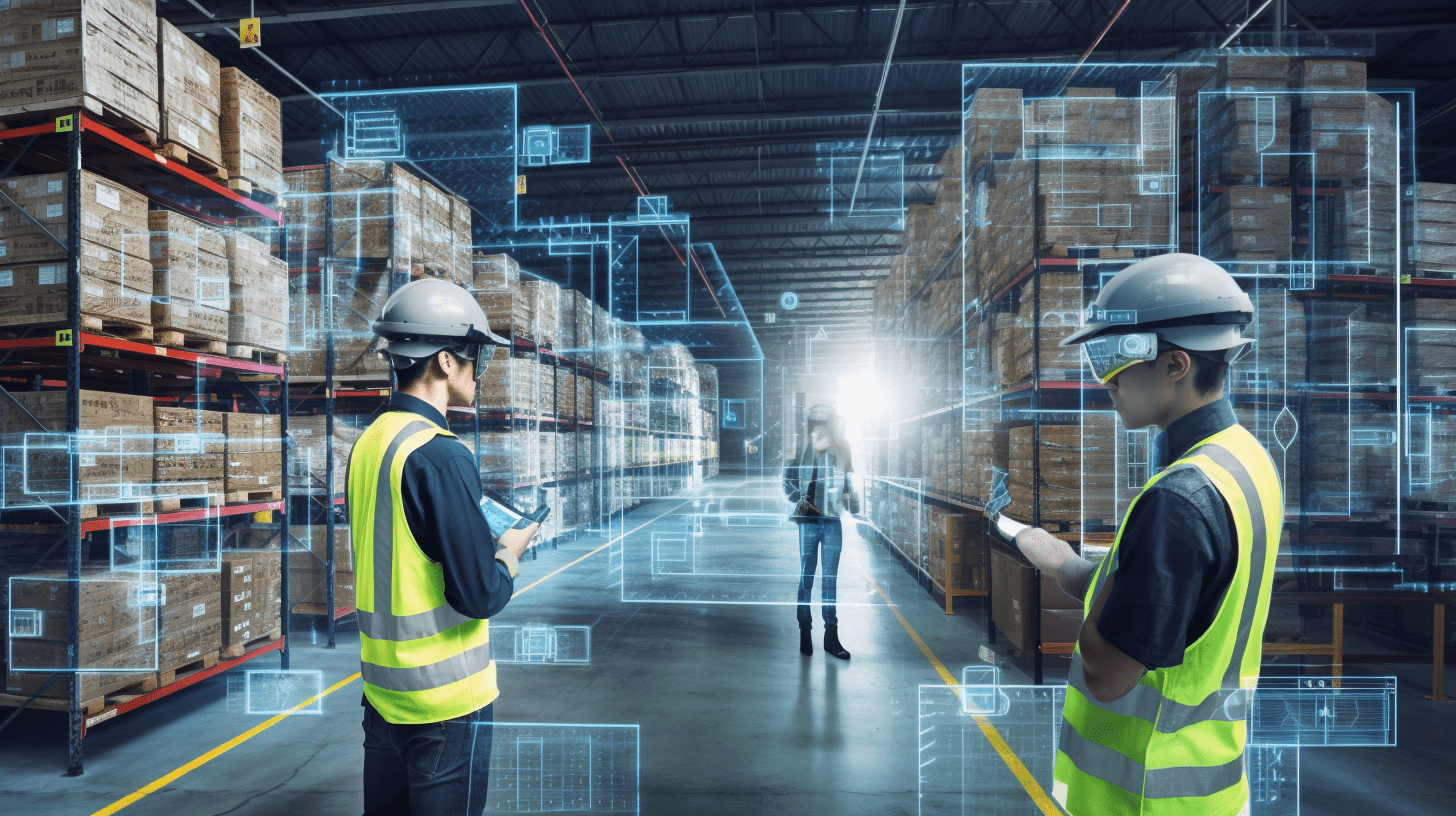
Digitalization not only lowers costs and improves efficiency but also builds resilience, mitigates risks, and addresses environmental, social, and governance (ESG) issues. A PwC report revealed that 86% of businesses agree they should invest more in technology to identify, track, and measure supply chain risks.
Theoretically, it sounds like a great idea, but is it really worth the time, effort, and expense? In a nutshell, the digitalization of logistics and the supply chain is like upgrading from an old bicycle to a sleek, high-performance sports car. And as the world becomes increasingly digital and operational disruptions continue to challenge businesses, there has never been a better time to harness cutting-edge technology in supply chains. One such innovation is the digital twins, which allows logistics companies to analyze and monitor operations, processes, and service levels in real-time, as well as through simulated ‘what-if’ scenarios. But what exactly is it?
What is a Digital Twin, and how does it work?
Studies reveal that 54% of professionals in various industries feel they have limited knowledge of digital twin technology or find understanding it to be confusing. So, let’s break it down and clarify the concept of digital twin technology.
A digital twin is a virtual image of a real object, process, or system that mirrors the behavior and appearance of its real-world counterparts. It could simulate everything from a simple asset performance to more complex digital twins of entire systems, such as warehouses or inventory positions.
Basically, a digital twin is a clever computer program that uses data to create simulations that predict how a product or process will behave. This is possible due to using the Internet of Things (IoT), software analytics, and leveraging artificial intelligence (AI) development services.
So, how does it work? The magic begins with a team of data science engineers or applied mathematics maestros diving into the operational data and physics of a real-world asset or system to create a model that imitates the original. Developers then create virtual models constantly fed with information from the origin through sensors. Thus, digital twins can mimic real-time events.
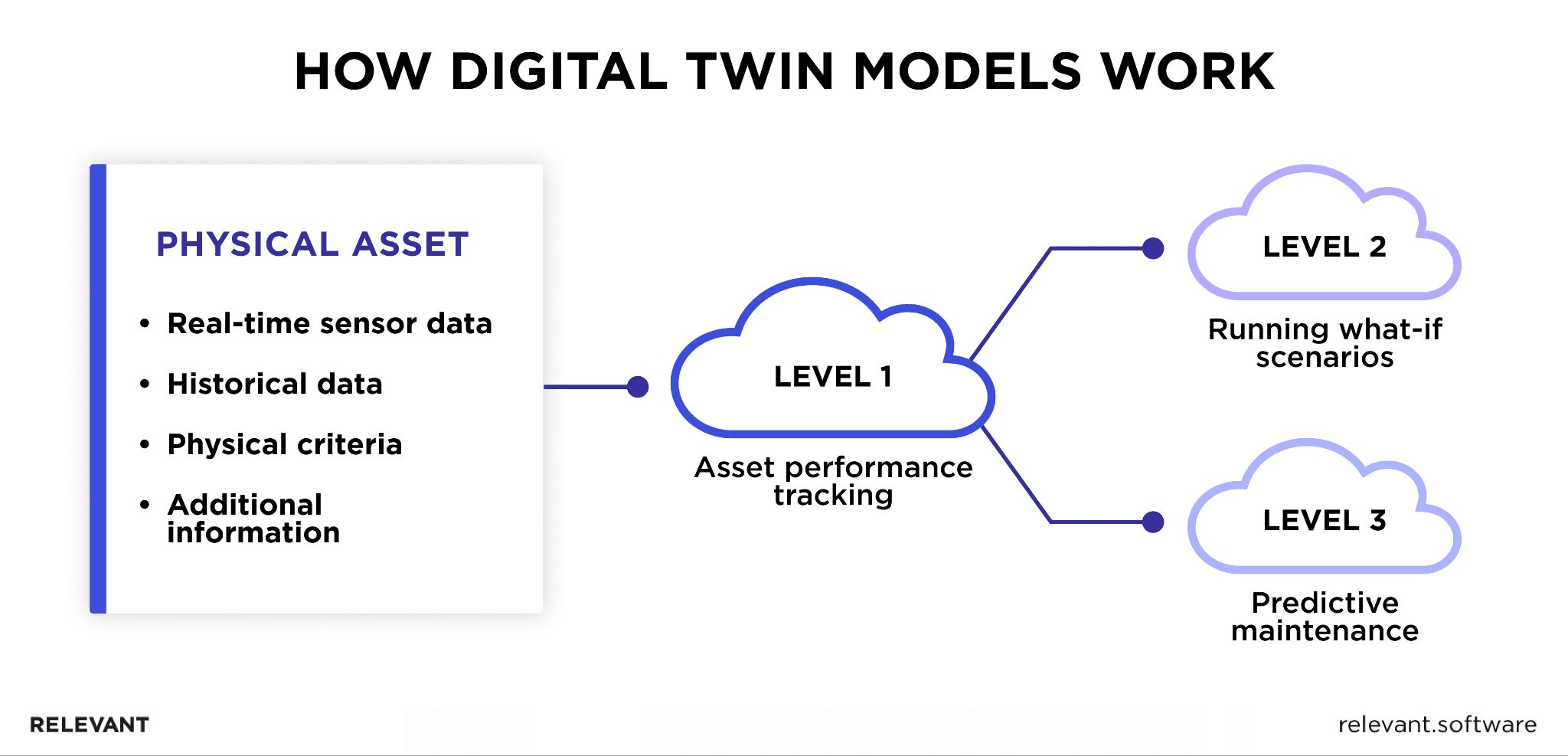
You can build as simple or complex a digital twin as you need, and the amount of data you provide will determine the accuracy of the physical version simulation. It can be employed alongside a prototype to offer feedback during product development or even serve as a prototype itself, modeling potential outcomes when a physical version is built.
Data-driven digital twins vs. physics-driven digital twins: the difference
Imagine digital twins as two siblings with distinct personalities and skill sets, yet united by the common goal of optimizing your logistics operations.
So, the data-driven digital twin is like a master detective, meticulously sifting through mountains of data to uncover hidden insights, patterns, and trends. This twin relies on historical and real-time data, employing advanced analytics and machine learning algorithms to predict future scenarios and optimize your operations. Think of it as having your own personal Sherlock Holmes, whose sole mission is to solve the mysteries of your supply chain and help you make informed, data-driven decisions.
On the other hand, the physics-driven digital twin is akin to a skilled engineer possessing an understanding of the physical laws governing your logistics processes. This twin employs mathematical models, simulations, and engineering principles to analyze the behavior of your supply chain components, from individual assets to the entire system. It’s like having your own personal Tony Stark, using their expertise in physics and engineering to create a virtual replica of your operations that can predict and test outcomes, ensuring your logistics run efficiently.
Now, you might wonder, “Which digital twin is the right fit for my organization?” Well, both are invaluable assets to logistics leaders, but you should understand the unique needs and challenges of your operations. For example, if you need to simulate and analyze the behavior of your physical assets and processes, the physics-driven twin could be your perfect ally. And if you’re dealing with vast amounts of data and require advanced predictive analytics, the data-driven twin might be your go-to solution.
In fact, as modern supply chains generate more data than ever before due to the widespread adoption of automated supply chain management solutions, IoT, AI, and ML, data-driven digital twins capture more attention from logistics leaders. They open up more opportunities for modeling predictions, and that’s why we will discuss specifically data-driven digital twins.
Benefits of Digital Twin in Logistics
By implementing a supply chain digital twin in the logistics sector, businesses can unlock numerous benefits, including advanced data analysis, predictive maintenance, and significant cost savings. McKinsey predicts that digital twins can boost revenue by 10%, speed up time to market by a jaw-dropping 50%, and enhance product quality by 25%. Just imagine the possibilities – efficiency soars, expenses drop, and customer satisfaction reaches new heights. So, let’s discover the advantages of logistics digital twin technology.
Enhanced decision-making
Digital modeling allows for data-driven decision-making, helping you spot patterns and seize opportunities for improvement. Think about it – with greater awareness comes a deeper understanding of the factors driving product quality and operational efficiency. You can even run “what-if” scenarios and troubleshoot rollouts for seamless implementation, all while navigating potential future hurdles.
Armed with these valuable insights, planning becomes a breeze, and accuracy skyrockets. You can use historical data to guide innovations and changes, all while minimizing the risks that come with untested ideas.
And the cherry on top? This wealth of real-time data and advanced analytics empowers businesses to make smarter, faster decisions about adjustments to their manufacturing value chain, ensuring financial viability at every step.
Improved asset tracking and management
The digital twin can help you improve your asset management and reduce maintenance costs by providing you with precise insights into your assets’ performance and status based on real-time data.
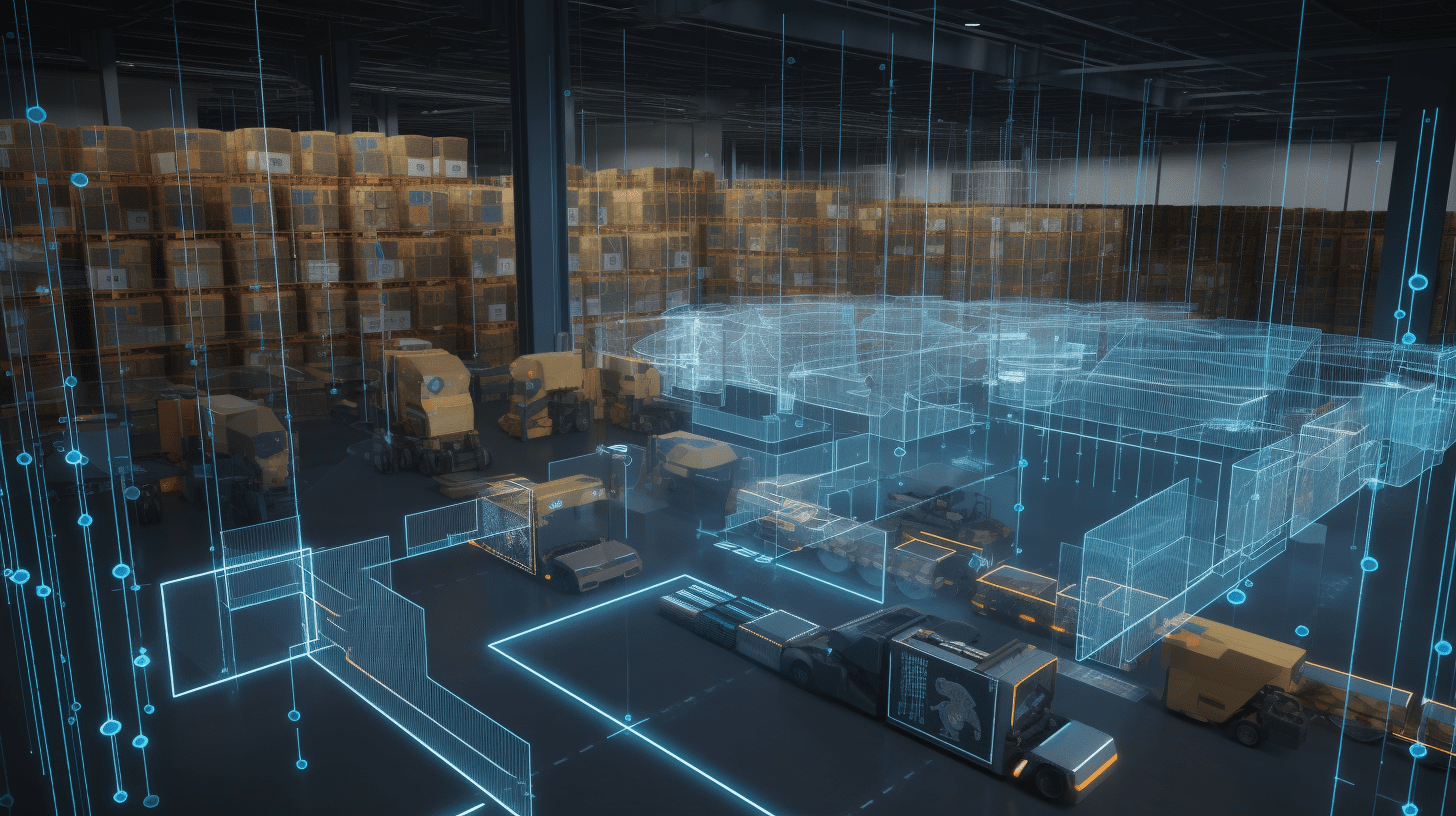
But wait, there’s more. Digital twins are like your own logistics maestro that fine-tunes the coordination of assets used to shift goods, such as trucks, planes, and trains. Companies can assess failure modes, timings, and the resulting business impact by gathering and analyzing sensor data and running simulations or what-if scenarios. This can lead to better asset performance and lower maintenance costs.
Apart from that, using digital twin technology is possible even before a physical asset exists. That’s right! Get a brand new truck design on the drawing board? A digital twin can validate every element of its design and operations long before you even think of constructing it. And it doesn’t stop there – this can also be used with other assets like office buildings, warehouses, or last-mile delivery plans.
Optimized fleet management
Transportation issues are often the culprit behind supply chain hiccups. While driver shortages play a role, smarter planning strategies can make a real difference to your fleet management. Say goodbye to guessing games with your transportation strategy. With real-time data from digital twin models, you can tackle any situation that comes your way. It helps with strategic planning, such as weighing the trade-offs between faster routes via planes and more cost-effective options via ships. Moreover, this advanced modeling can pinpoint common shortages and disruptions, revealing high-level trends that might have been overlooked.
Logistics teams can now simulate how deliveries play out, making data-driven decisions instead of relying on gut feelings. This is a game-changer, particularly for cold chain logistics shippers and carriers who depend on efficient transportation.
Reduced operational costs
Slashing your operational costs while improving efficiency – sounds too good to be true, right? Well, with digital twin technology in logistics, this dream can become your reality. You can optimize your inventory levels and eliminate waste, reducing substantial costs. Moreover, you save transportation costs with enhanced route optimization and shipment scheduling.
On top of that, digital twins help extend the lifespan of your equipment and facilities, cutting back on investment costs for new machinery. Take a fleet manager, for instance – they can use digital twins to monitor the location, mechanical fitness, speed, and fuel consumption of hundreds of trucks. And when issues arise, they can intervene swiftly, boosting situational awareness and reaction time.
Increased supply chain transparency
The supply chain digital twin provides real-time visibility and insights into every step of the logistics process, from the moment raw materials are sourced right up to when the final product is delivered. With this level of transparency, you can keep an eagle eye on inventory levels, spot bottlenecks or delays, and proactively address any issues before they become problems.
And that’s not all. A digital twin provides end-to-end traceability, which means you can track the movement of goods, check their condition, and ensure compliance with all regulatory requirements. This level of transparency not only strengthens the integrity of the supply chain but also builds trust among stakeholders, including customers, suppliers, and regulatory bodies.
Real-time risk management
With digital twin technology, you can visualize the impact of taking risks, assess potential outcomes, and make informed decisions that safeguard your savings, ROI, and other critical metrics.
But how does it make it possible? Digital twin modeling empowers leadership teams to monitor and mitigate risks effectively. By testing probabilities, running simulations, and exploring different scenarios, you can proactively identify potential emergencies and develop strategies to overcome them. It’s like having a virtual laboratory where engineers can disrupt the system, study its reaction, and develop robust mitigation plans.
This makes risk assessment more accurate, helping you anticipate and address vulnerabilities before they escalate. The development of new products is accelerated as you can test and fine-tune them in the digital realm, saving time and resources. Additionally, the reliability of your production line gets a significant boost, minimizing disruptions and enhancing overall performance.
Predictive maintenance
Gone are the days of reactive or preventive maintenance approaches, which businesses have traditionally relied on. Instead of addressing issues as they arise, which may result in unexpected downtimes and missed maintenance opportunities, digital twins take maintenance to a whole new level.
By continuously collecting data from IoT sensors installed on assets, they create a real-time digital replica that mimics the asset’s condition, performance, and potential damage. This enables accurate predictions of maintenance needs, allowing you to take proactive measures before failures occur. Digital twins can anticipate faulty scenarios, analyze maintenance workflows, and test various fault scenarios.
So, what does it mean for your logistics operations? The value of predictive maintenance goes beyond cost savings and operational efficiency. It helps you improve asset performance, prolong equipment lifespan, and reduce downtime. With early awareness of maintenance needs, teams can quickly respond, minimizing the impact of potential problems and ensuring a smoother supply chain flow.
Reduced environmental impact and improved sustainability
With a rising awareness around sustainability, it’s crucial for businesses to reduce their carbon footprints. And here’s the good news: digital twin logistics technology can help you achieve just that while enhancing your operational efficiency.
One of the key advantages of logistics digital twins is their ability to optimize transportation while keeping sustainability in mind. By identifying fuel-efficient options and suggesting alternative transportation modes that minimize carbon emissions, digital twins help you strike a balance between customer expectations and sustainability goals. So, you provide on-time delivery and minimize environmental impact, all while boosting your bottom line.
Another way digital twins contribute to sustainability is by modeling different raw materials and suppliers to assess their impact on the overall carbon footprint. You can analyze various scenarios to make informed decisions about sourcing strategies and choose suppliers that align with your sustainability goals. The result? A more sustainable and environmentally-friendly supply chain.
Finally, digital twins play a crucial role in waste reduction and energy efficiency. It helps streamline your processes, making sure everything runs smoothly. The result is less waste, reduced energy consumption, and a smaller carbon footprint while better productivity.
Real-world Applications of Digital Twin in Logistics
Pioneers in the supply chain industry are already harnessing the power of digital twins to revamp their everyday operations. Let’s dive into some compelling real-world use cases of digital twin supply chain technology that is making waves in the industry.
Warehouse management
A digital twin model offers real-time visibility into everything that happens within the warehouse walls. From adjusting racks and deploying staff or robots to modifying layouts, these changes are simulated in a digital environment for sound decision-making.
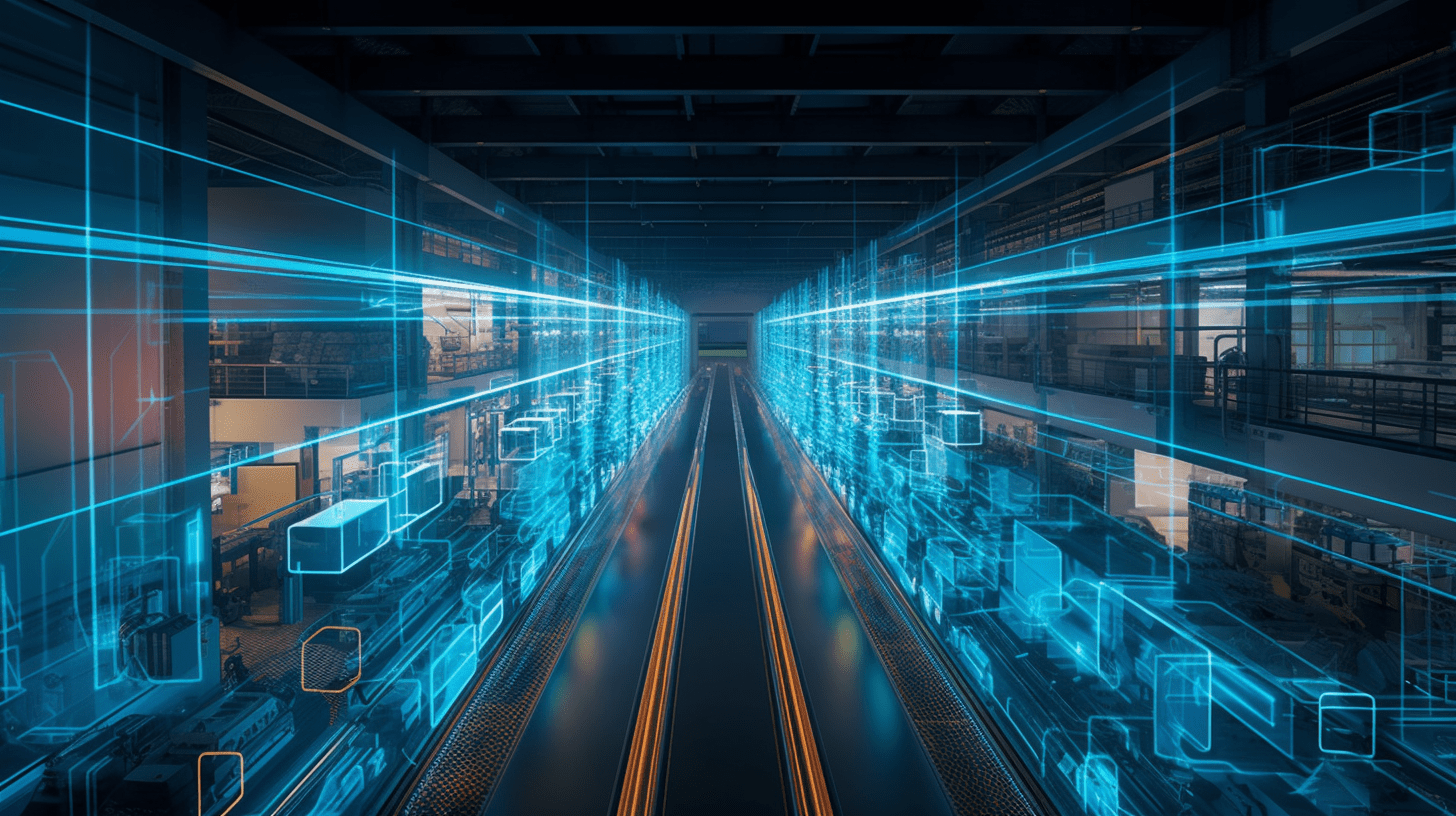
It’s like having a map that can guide you to optimal inventory locations, help keep track of your supplies, and determine the fastest routes for your busy loaders. It even lets you evaluate how the changes to layout or process can impact your operations without actually making the adjustments. This means you can use the space and resources as efficiently as possible.
It’s no wonder that the tech giants are jumping into the bandwagon. IBM, for example, offers a system that uses sensor data and point-of-sale systems to create a virtual model of your inventory. Their digital twin can predict demand, streamline the supply chain, and keep your warehouse hold perfectly balanced.
Transportation management
Digital twins offer unprecedented visibility into the progress of packages or cargo as they move through the supply chain. Having access to real-time data on location, condition, and status, businesses can spot potential roadblocks and fix them. Picture a company using a digital twin to monitor the temperature and humidity of perishable cargo, ensuring it’s transported in optimal conditions.
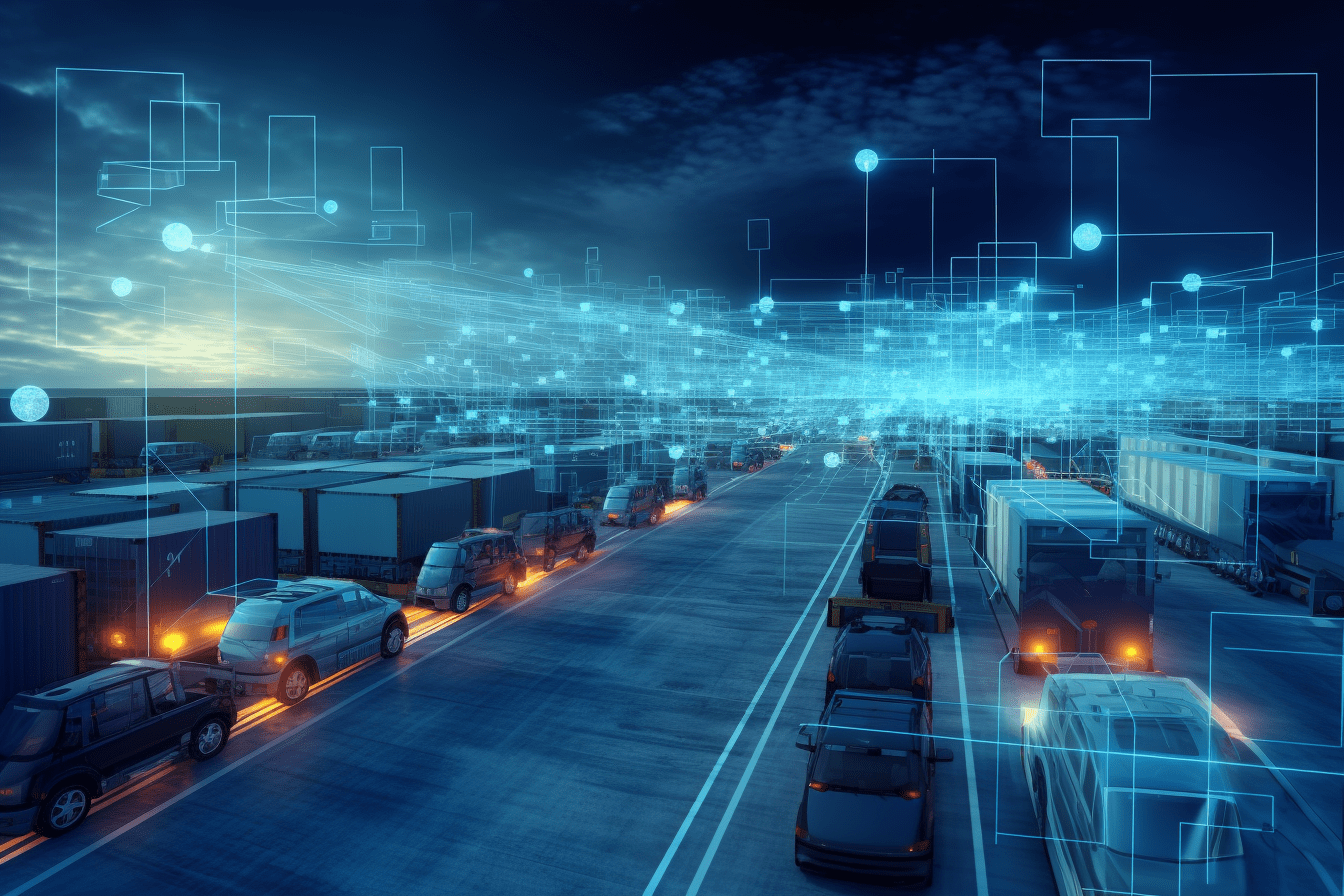
But the magic doesn’t stop there. Route optimization is a game-changer, as digital twins help you pick the fastest routes based on real-time traffic data from multiple routes. It’s like having a personal GPS that doesn’t just guide you but finds the quickest path too, ensuring your deliveries are efficient and fuel consumption lower.
Even your vehicles aren’t just metal anymore. With a digital twin, they become a wealth of information, helping better understand their environment and performance to make smarter decisions about fleet management. For example, FedEx uses digital twins to map out the best routes for their trucks and monitor shipments around the clock.
Supply chain management
And when it comes to supply chain management, digital twins bring the whole picture into focus. They offer a comprehensive view, capturing every aspect, from production and inventory to customer demand and supplier procurement. Supply chain management with IoT and digital twins offers real-time data and insights into the network, letting you make better decisions and improve your forecasting capabilities.
What if you could predict how well your supply chain would respond to increased demand or delays from subcontractors? With digital twin technology, you can. The blend of advanced analytics and AI paves the way for smarter use of resources, accurate planning, and a lower risk of unexpected issues.
The supply chain’s resilience is critical, and digital twins help organizations minimize risks and withstand and recover from disruptions. Real-time data and insights from digital twins empower businesses to detect potential weak spots and take proactive measures to minimize the impact of possible disruptions.
For instance, a digital twin might alert a company to a potential bottleneck in its production process, allowing it to address the issue before it becomes a significant problem. It also could help you determine alternative transportation routes or suppliers if something goes wrong, ensuring customer satisfaction stays high.
Challenges and Limitations of Digital Twin Implementation
As exciting as supply chain digital twin technology may be, it’s essential to approach it with a realistic mindset. While the benefits are undeniable, there are challenges and limitations to consider before diving headfirst into implementation. Let’s take a closer look at the key challenges you should be aware of to ensure a sustainable and value-adding digital twin experience for your organization.
High initial investment
You might think that adopting new technologies like digital twins will break the bank. It’s true implementing digital twins requires considerable investment in both time and money. You need resources for designing and developing the digital twin, not to mention the costs of training staff and ongoing maintenance.
But here’s a little secret: the savings generated thanks to digital twins can actually offset the investment costs and then some! Thanks to emerging asset financing models, it’s now possible to rent equipment based on a ‘pay per use’ scheme, bypassing the need for substantial initial capital expenditure. In the long run, this approach can bring significant value and efficiency to your organization.
Data security and privacy concerns
Digital twins with IoT sensors collect data from various sources and different types of integration endpoints. With massive amounts of data gathered from various endpoints, each one represents a potential security vulnerability. So, companies must thoroughly assess and update their security protocols before embracing digital twin technology.
Critical security aspects to consider include:
- Data encryption will protect information both in transit and at rest from unauthorized access
- Access privileges will help to establish user roles and implement role-based access control to limit access to sensitive data
- Least privilege principles grant users just enough access to perform their tasks, thus minimizing the risk of data leaks
- Addressing known device vulnerabilities through regular devices and software updates to address known security vulnerabilities and prevent potential breaches.
Integration with existing systems
Your logistics digital twin should be integrated with your existing systems and processes to ensure accurate and relevant data flows seamlessly through your logistics operations. It can be a complex and time-consuming process as the technology needs a high level of data integration and the necessary infrastructure.
So, for successful integration, you should address such factors:
- Ensure the digital twin technology is compatible with your existing systems, such as warehouse management system software or transportation management system, to avoid unnecessary disruptions or inefficiencies.
- Maintain data quality and consistency across all systems to achieve accurate and reliable digital twin models.
- Seamless communication and data exchange between your digital twin and other systems are vital to make the most out of the technology.
- As your business grows, your digital twin technology should be scalable to accommodate the increasing demands and complexities of your logistics operations.
- Introducing new technology might require changes to existing processes and workflows. Effective change management strategies can help minimize disruption and ensure a smooth transition.
Skilled workforce requirements
Finding people with the right knowledge and expertise to implement and manage digital twin technology is increasingly difficult. But it’s an essential challenge to overcome if you want to harness the full potential of this cutting-edge technology in your logistics operations.
Here’s the deal: The successful implementation of digital twins requires a mix of specialized skills, including data science, software engineering, and domain expertise in logistics and supply chain management.
Plus, as technology rapidly evolves, your workforce must be agile and adaptable to keep up with the latest innovations and industry developments. This means that continuous learning and upskilling should be your top agenda.
So, how can you tackle this challenge head-on? Here are a few strategies to consider:
- Promote a culture of innovation by encouraging creative thinking, experimentation, and a growth mindset within your organization to foster a workforce that can effectively navigate the complexities of digital twin technology.
- Invest in training and development to help your existing workforce stay up-to-date with digital twin technology and industry best practices.
- Collaborate with educational institutions to tap into a pool of fresh talent and encourage the development of the skills needed for digital twin implementation.
- Partner with a reliable tech provider that will help you bridge the skills gap, providing you with the expertise needed to build and maintain your digital twin environment.
Tips on How to Transform Raw Data into Actionable Supply Chain Digital Twin
The digital twin model is not static but constantly changing, requiring relevant real-time data. And making all the information from multiple sources available is one of the challenging tasks. But don’t worry – we’ve got you covered. By following these tips, you can transform raw unstructured data into a powerful tool that will supercharge your logistics operations:
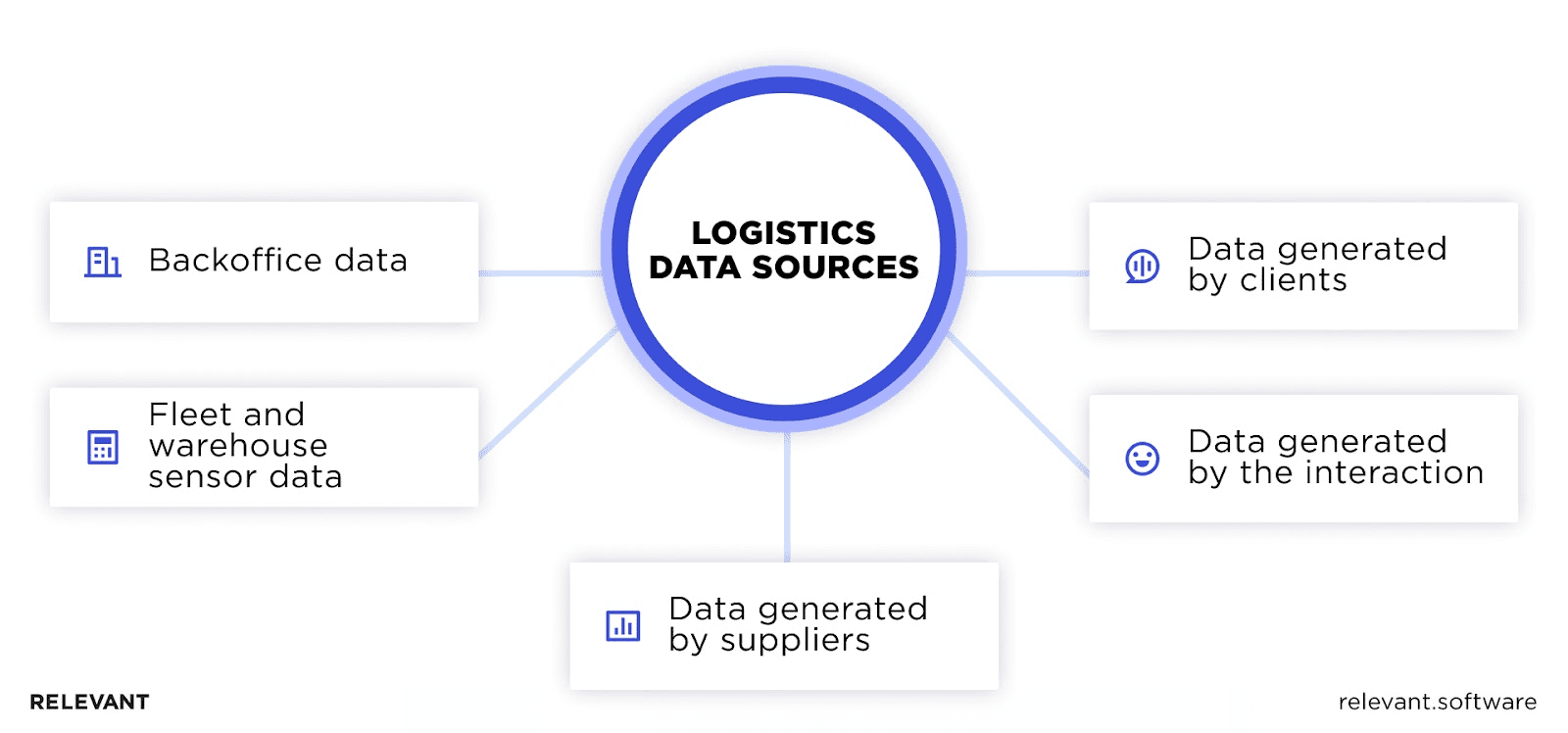
- Begin with a solid foundation. To kickstart your digital twin journey, you’ll need to gather data from various sources, including warehouses, manufacturing facilities, suppliers, trucks, ships, and planes. This data will form the backbone of your digital thread, helping you build meaningful connections, understand decision-making processes, and track the status and condition of assets.
- Embrace standardization. Data from different sources often lack consistency, making integration a challenge. To overcome this, invest in standardizing your data and ensuring compatibility between systems, such as ERP and WMS.
- Leverage modern solutions. API-based technology is revolutionizing the way we manage and share supply chain data. APIs provide an easy way to synchronize data from various sources and build a unified data source for your digital twin.
- Overcome data limitations. If your current systems lack the necessary data, there are two ways to overcome this challenge. You can either aggregate unstructured data from your existing systems and then make it operational or generate a new data source using accurate information.
- Train your digital twin. Think of your digital twin as a recruit, you’ve to train. Feed it with historical data so it can learn from past experiences and watch it grow smarter, making informed recommendations. Ensure you have a sufficient amount of historical data to help your digital twin flex its analytical muscles to the max.
- Embrace data-driven decision-making and develop a culture that supports using digital twins in your organization. This approach will smooth the path for a successful digital twin deployment and ensure effective ongoing management of your digital twin.
Bottom Line
Digital twins have emerged as a powerful catalyst for data-driven transformation, particularly in the realms of supply chain management and logistics. They’re redefining industry norms, helping pioneers cut costs, enhance scalability, make smarter decisions, and deliver outstanding customer experiences.
So, what’s next? How can you harness the power of digital twins in your organization?
Well, the answer lies not in creating a copy of your entire operations but rather in identifying key areas of focus – those pain points and targets that will provide the best ROI. What are your goals, and what outcomes will prove most impactful for your organization?
Embarking on the digital twin journey is no small task. It calls for the precise and real-time mirroring of complex assets and behaviors in a digital environment. And let’s not forget the pivotal role of high-quality data – because when it comes to digital twins, it’s a simple case of good data in, good decisions out.
That’s why it’s wise to have seasoned professionals by your side that will support and guide you at every stage. Our team at Relevant Software is experienced in developing advanced logistics software solutions, and we’re ready to help your business thrive in this digital era. Are you ready to transform your operations, harness the power of digital twins, and ride the wave of technological innovation? Don’t wait for tomorrow, seize the opportunity and contact us today.



